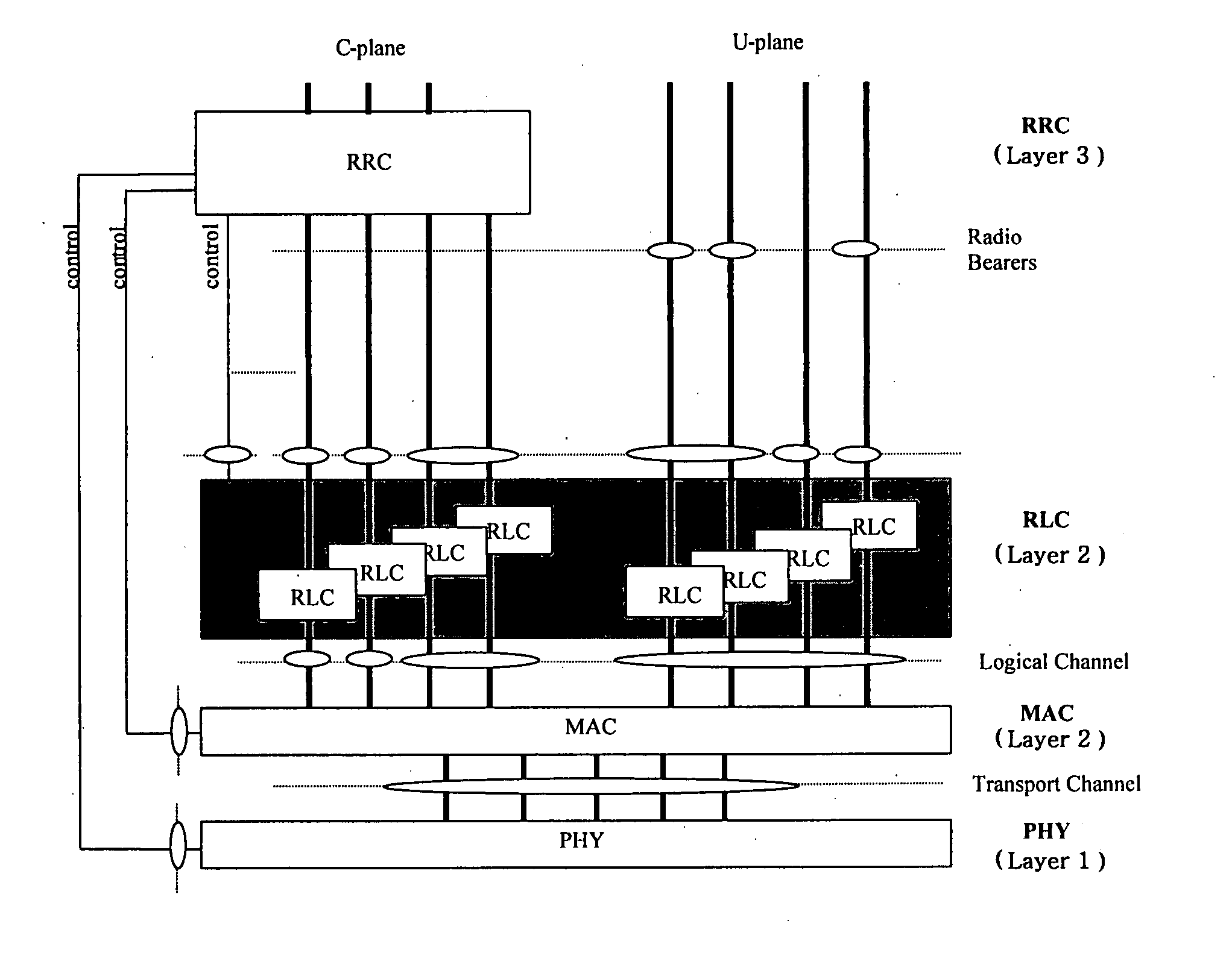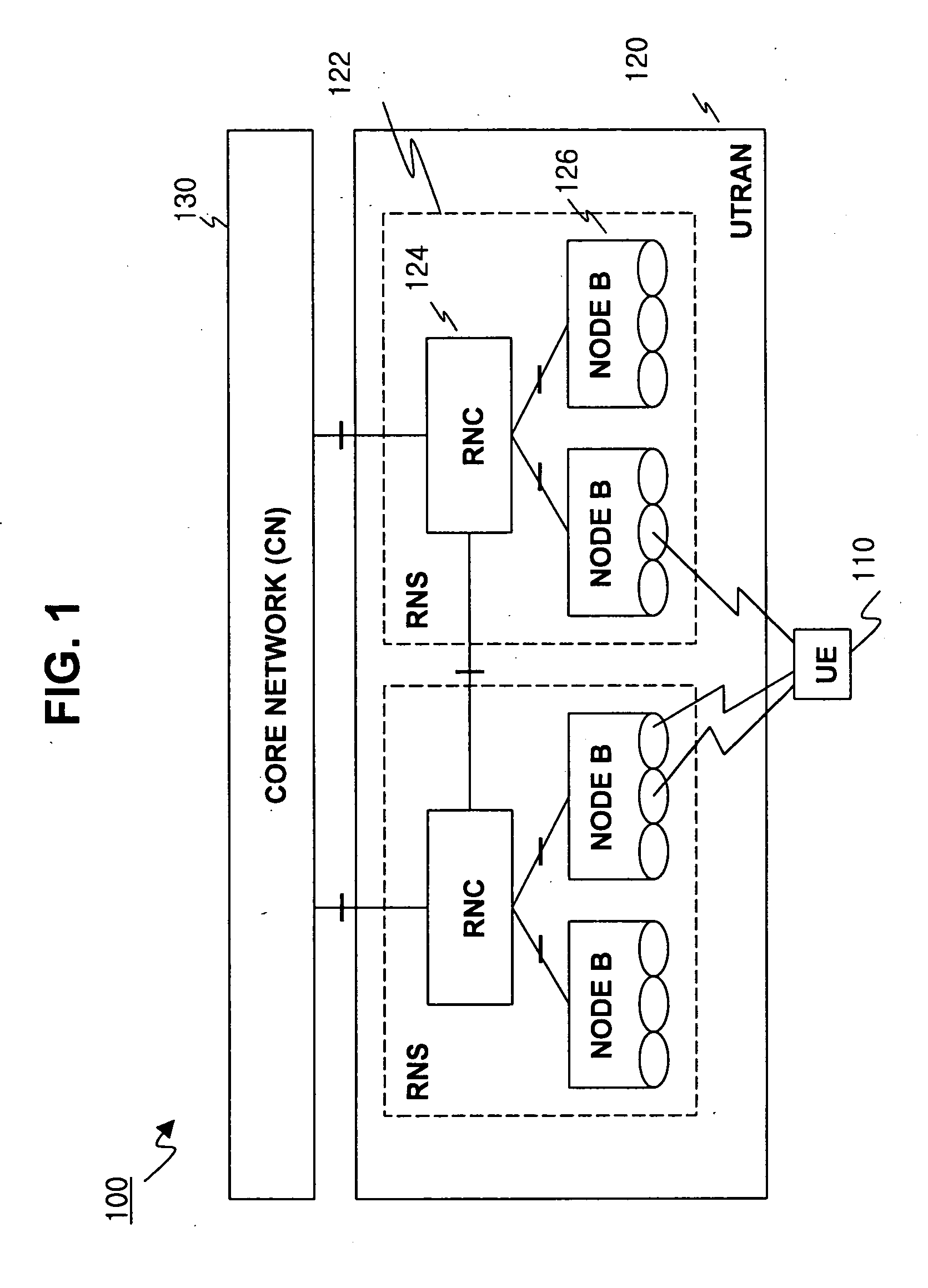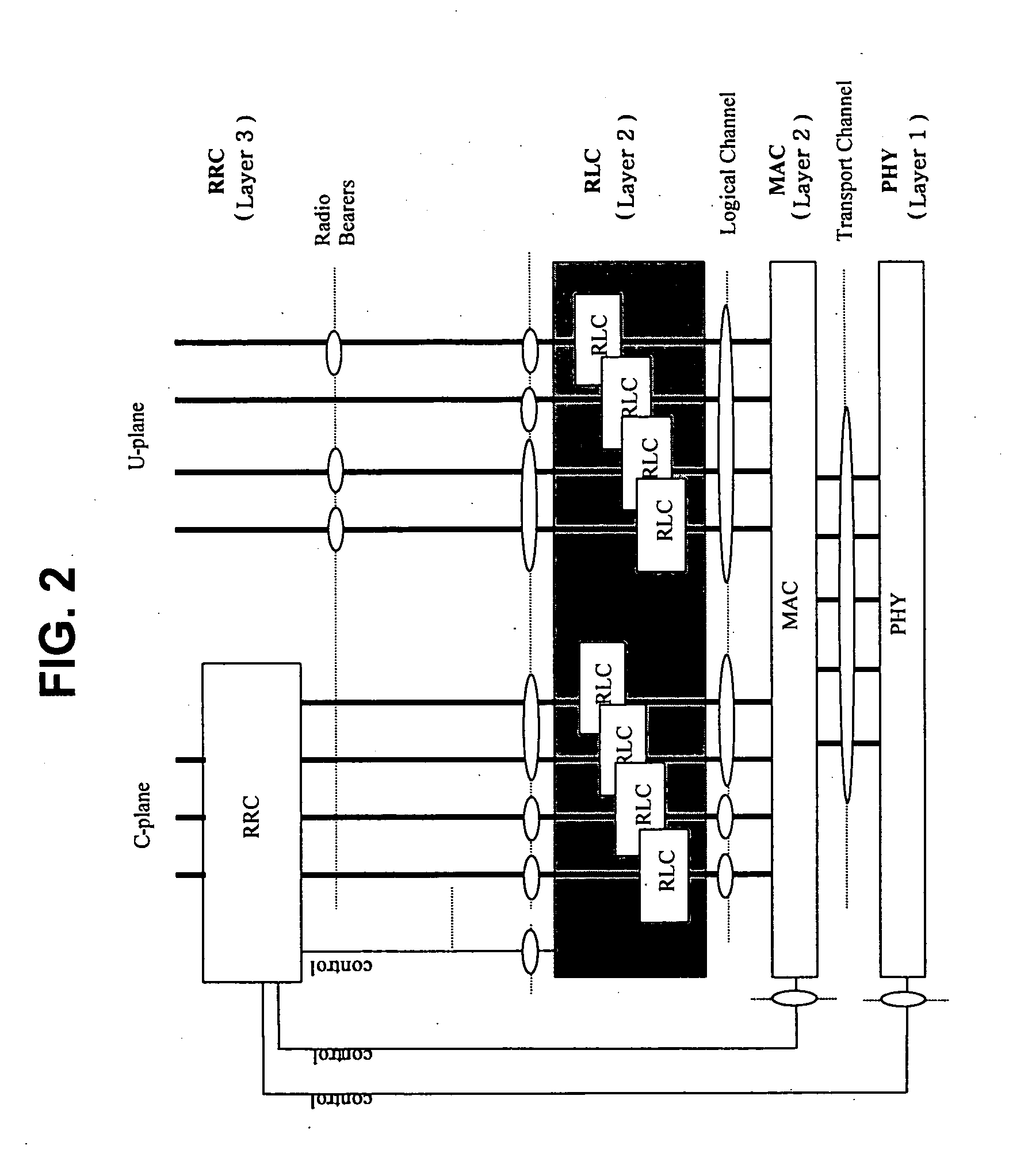Paging technique to support point-to-multipoint (p-t-m) data transmissions
a data transmission and multi-point technology, applied in the field of wireless (radio) communication, can solve the problems of unnecessary ue power consumption, waste of radio resources, and much more serious problems, and achieve the effect of preventing unnecessary ue power consumption and efficient ue power usag
- Summary
- Abstract
- Description
- Claims
- Application Information
AI Technical Summary
Benefits of technology
Problems solved by technology
Method used
Image
Examples
Embodiment Construction
[0036] The present invention may be better understood by considering the following additional explanation in view of the related art.
[0037] The paging indicator channel (PICH) is used for receiving dedicated paging information, and a UE (terminal) receives the PICH at a particular time and reads certain bits (i.e., the paging indicator (PI) corresponding to that UE) in the 288 bit portion of a PICH frame. The total number of bits for the PI depends upon the mapping method that is used. A single PI is assigned to a single UE, which periodically reads that PI. Here, the UE reads its PI in units of cycles, each cycle containing a plurality of frames. For example, a UE may read its PI at every UE specific DRX cycle. Namely, the UE would read one frame that corresponds to that UE for each UE specific DRX cycle, and this is also know as a paging occasion.
[0038] In order to handle point-to-multipoint (p-t-m) services in a communications system, e.g., providing multimedia broadcast and mu...
PUM
 Login to View More
Login to View More Abstract
Description
Claims
Application Information
 Login to View More
Login to View More - R&D
- Intellectual Property
- Life Sciences
- Materials
- Tech Scout
- Unparalleled Data Quality
- Higher Quality Content
- 60% Fewer Hallucinations
Browse by: Latest US Patents, China's latest patents, Technical Efficacy Thesaurus, Application Domain, Technology Topic, Popular Technical Reports.
© 2025 PatSnap. All rights reserved.Legal|Privacy policy|Modern Slavery Act Transparency Statement|Sitemap|About US| Contact US: help@patsnap.com



